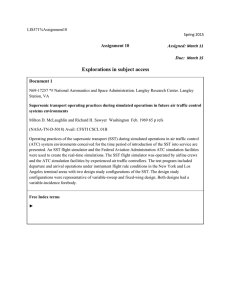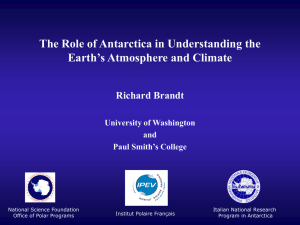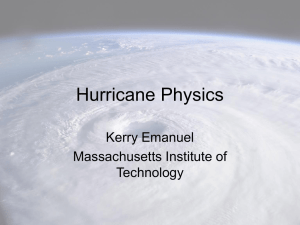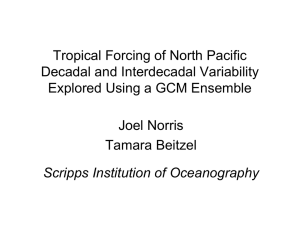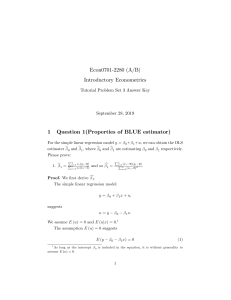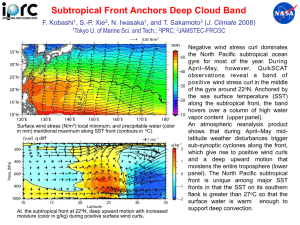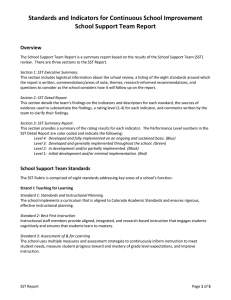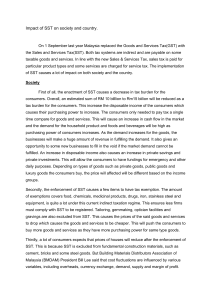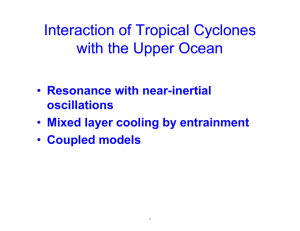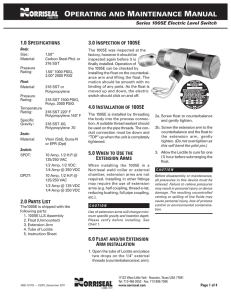Computational Models of Hurricanes: A simple model
advertisement
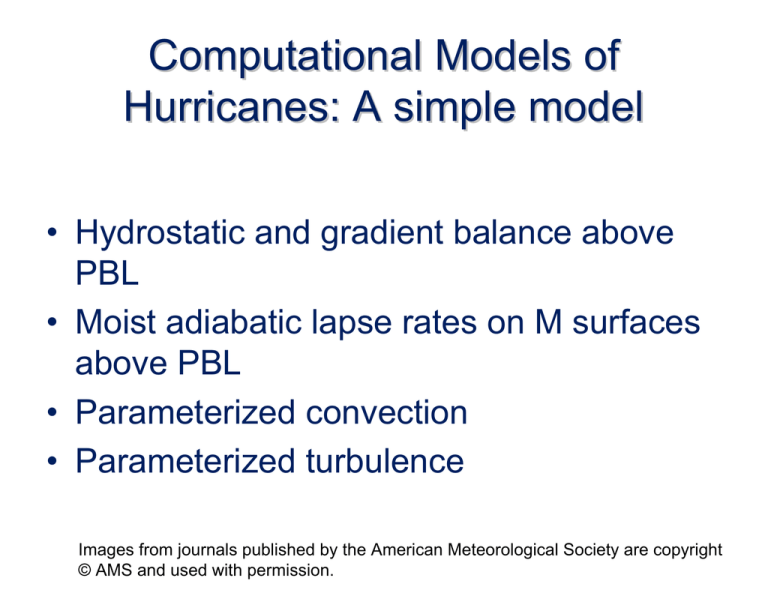
Computational Models of
Hurricanes: A simple model
• Hydrostatic and gradient balance above
PBL
• Moist adiabatic lapse rates on M surfaces
above PBL
• Parameterized convection
• Parameterized turbulence
Images from journals published by the American Meteorological Society are copyright
© AMS and used with permission.
Horizontal Equation of Motion
Remember vertical equation:
dw
dt
wp
D
g
wz
Horizontal momentum equation in inertial coordinates:
du
dt
wp
D
wx
In rotating earth coordinates:
du
wp
D
fv,
dt
wx
f { 2: sin T In cylindrical coordinates:
du
dt
wp
v2
D
fv wr
r
Gradient Balance:
2
wp
v
D
# fv wr
r
Transformed radial coordinate:
Potential Radius:
f 2
R {M
2
f 2
rV r
2
Example of Distribution of R surfaces
Model behavior
Character of control simulation
Tropical Cyclone Motion
Tropical cyclones move approximately with a suitably
defined vertical vector average of the flow in which they
are embedded
35
50
Latitude
30
40
25
30
20
20
15
145
150
155
Longitude
160
165
Lagrangian chaos:
“Beta Gyres”
Operational prediction of tropical cyclone tracks:
Example: 20 random tracks
passing within 100 km of Boston
20 “worst” tracks:
Interaction of Tropical Cyclones
with the Upper Ocean
• Resonance with near-inertial oscillations
• Mixed layer cooling by entrainment
• Coupled models
Excitation of Inertial Oscillations
Mixing and Entrainment:
Comparison with same atmospheric model coupled to 3-D ocean
model; idealized runs:
Full model (black), string model (red)
Mixed layer depth and currents
SST Change
Define feedback factor:
FSST
'p
1,
'p |SST
where 'p |SST is the central pressure drop at fixed SST.
Do many, many numerical expreiments, varying SST,
Coriolis parameter, traslantion speed, etc. Curve fit
dependence of FSST on these parameters. Result:
Effects of Environmental Wind
Shear
• Dynamical effects
• Thermodynamic effects
• Net effect on intensity
Streamlines (dashed) and ș surfaces (solid)
MIT OpenCourseWare
http://ocw.mit.edu
12.103 Science and Policy of Natural Hazards
Spring 2010
For information about citing these materials or our Terms of Use, visit: http://ocw.mit.edu/terms.


